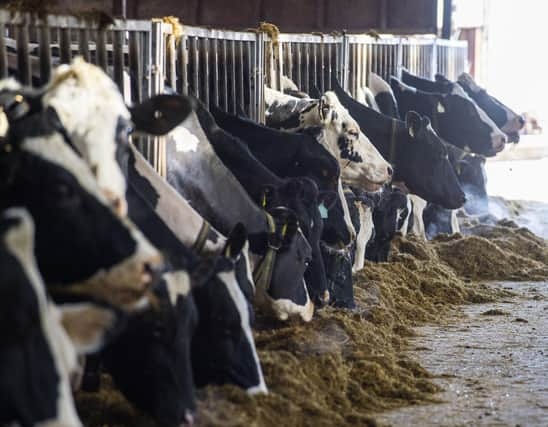Farming: Agriculture route map 'hidden in plain sight' says expert


But a legislative expert this week claimed that, while it might be “hidden in plain sight”, much of the administration’s intention had already been made public.
Speaking at the annual general meeting of the Scottish Agricultural Arbiters and Valuers Association (SAAVA) Jeremy Moody, secretary to the Central Association of Agricultural Valuers (CAAV) – who is widely recognised as the maestro of policy and legislative interpretation – said that the Scottish Government’s proposed policy direction had actually been pretty clearly laid out: “But not necessarily where farmers and their organisations have been looking for them.”
Advertisement
Hide AdAdvertisement
Hide AdAnd he said that while farming organisations had last year been similarly blind-sided by the publication of early details in the administration’s Scottish Climate Change Plan – rather than announced to the agriculture sector – a document published in recent days had revealed much of what farmers would be asked to deliver under the new regime.
Moody said that while many had dismissed the Scottish Government’s Vision for Agriculture paper as a “fluffy” document which was ‘big on ambition and aspiration but short on detail of how it would be achieved’, this was not actually the case: “And closer inspection of this document shows a lot of what will be expected of farmers under the new policy.”
Moody said that it outlined a clear bargain that urban areas would continue to support farmers – but in the expectation that the sector would deliver on climate change and biodiversity.
He said: “The three goals outlined are high quality food production, climate mitigation and adaptation along with nature restoration.
“But to fulfil their part of the bargain, it states that farmers will need to adopt sustainable and regenerative production practices – and that there will be a special focus on the role of the livestock sector as it has been highlighted as the major contributor to greenhouse gas emissions.”
While it was indicated that total direct payments – covering all areas, not just the basic payment schemes but other schemes such as LFASS – would continue to account for half of support, there would be strings attached. And the application of “conditionality” to these payments would, said Moody, expect recipients of support to deliver targeted outcomes on biodiversity gain and emissions reductions.
“This suggest something much more demanding and goal focused than has been seen under cross compliance” he warned.
With the immediate target of a 31 per cent reduction in greenhouse gas emissions by 2032 set for the sector, the Scottish Government’s estimates showed that the proposals put forward by the Farmer Led Groups were likely to deliver only 12 per cent
Advertisement
Hide AdAdvertisement
Hide Ad“And this leaves a lot to be found,” said Moody, “especially with an agriculture with so many cattle.”
He said that while the undertaking was given that the administration would “seek to maintain overall food production” it also stated that the balance of what was produced might need to change.
Comments
Want to join the conversation? Please or to comment on this article.